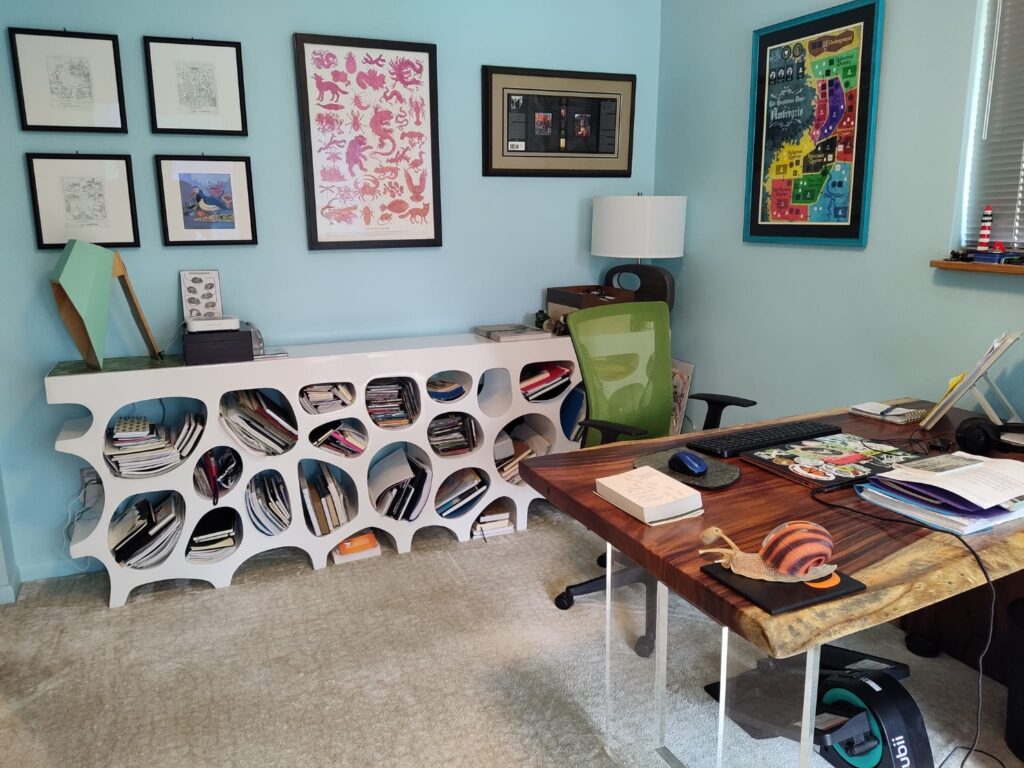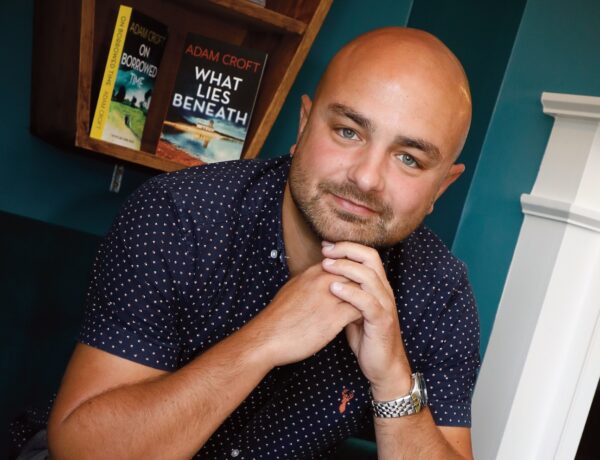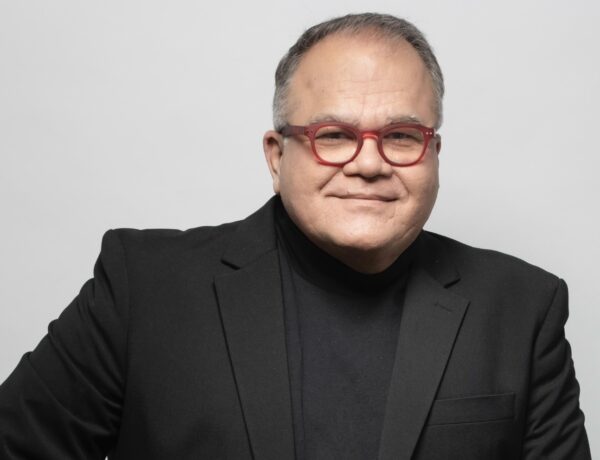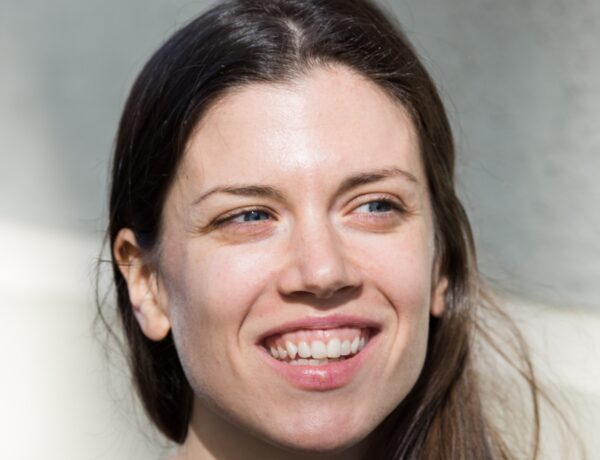Jeff VanderMeer’s NYT-bestselling Southern Reach trilogy has been translated into over 35 languages. The first novel, Annihilation, won the Nebula Award and Shirley Jackson Award, and was made into a movie by Paramount in 2018.
Recent works include Hummingbird Salamander and A Peculiar Peril, in addition to Theo Ellsworth’s graphic novel adaptation of his short story Secret Life. Dead Astronauts, Borne (a finalist for the Arthur C. Clarke Award), The Strange Bird, set in the Borne universe, are being developed for TV by AMC and continue to explore themes related to the environment, animals, and our future.
Over a 35-year career, VanderMeer has been a four-time World Fantasy Award winner and 19-time nominee. For eleven years, VanderMeer served as the co-director of Shared Worlds, a unique teen SF/fantasy writing camp he helped found, located at Wofford College in South Carolina.
Looking for inspiration to help you achieve your writing goals? Subscribe to our newsletter for exclusive insights into the routines, habits, and techniques of some of the most celebrated authors in history.
Hi Jeff, welcome to Famous Writing Routines! It’s great to have you here with us today. You have a wealth of experience as an author and editor, with a focus on science fiction and fantasy. What inspired you to delve into these genres?
I’m not sure I really think of it that way. I started out as a poet writing poems that tended to be about nature and when I branched out into short stories, there was always a mix of realism and the more surreal or hyperreal narratives.
I founded a literary press and published poetry for quite a while. As I wrote more fiction, my fascination with the natural world became extrapolation that manifested in fantastical ways. This first appeared in my novel Veniss Underground, where I thought of biotech as something surreal as much as scientific, in the sense that people tend to use tech of any kind without knowing how it works or even the ethics behind using it. So a Boschian phantasmagoria made sense in a place where biotech had become both horrific and beautifully independent.
Then, all of this meshed with a deep study of historical theory and eccentric historians, which culminated in my first major work, the Ambergris trilogy. These are books that explore the titular imaginary city, but the twist in terms of their “fantasy” element is that… there is none. Everything exists within the realm of the real, just not existing in our world.
Most of the fantastical element comes from researching mushrooms and cephalopods and applying that to aspects of culture and history in the Ambergris books. So I guess what I’d say is I’ve always had a world view where my writer’s eye notices the strangeness, absurdity, and contradictions of the world around us and that this manifests in non-realist fiction for the most part. It is a mode that provides both the distance and the space for my imagination that works best for me.
I’m curious to know how your travels through Asia, Africa, and Europe may have influenced your writing?
My parents joined the Peace Corps when I was four and my sister two, and we moved to Fiji, which was an experience itself. But then instead of raises, they took travel vouchers and we spent 6 months traveling home through just so many countries.
We stayed in hostels and YMCAs because we didn’t have a lot of money and were immersed in places for weeks at a time—especially in Southeast Asia. When you’re eight or nine and just basically there’s so much incoming sensation, image, interaction that’s new to you and from so many different sources, it’s truly a formative experience. You don’t quite understand everything or know the richness you’re receiving, but over time it comes out in the work.
What I am glad for is an instinctual rebellion against, for the most part, writing stories or novels set in the countries we visited. Somehow, I knew that I’d just been a visitor, not a part of those places, and so the influence is indirect and recombined and reformulated in certain aspects of the Ambergris fictions and almost unrecognizable. But I know the secret autobiography in these works and how this detail or that event actually happened to me or I witnessed on our travels.
In thinking of Ambergris as a melding of so many confluences of influences and cultures, all of this of course helped. It probably affected how I think about narrative and story, as most of my first exposure to fiction was through things like Indian comic books of the Ramayana and books that weren’t by US or UK writers.
Your Southern Reach trilogy has been translated into over 35 languages and won several awards, including the Nebula Award and Shirley Jackson Award. What was your creative process like in writing this series?
The idea of place can be misunderstood in my fiction. Landscape and culture can impose their will on characters because of systems of colonialism or oppression or just bureaucracy gone wrong, but place itself isn’t a character. It’s always wedded to the character you’re writing from the viewpoint of. Which means the landscape is permeable and mutable.
What I would see walking down the street, emphasize, notice, ignore, to use a crude example, is totally different, potentially, than someone else. But in some cases you know the landscape better as the writer than in others, even within the series, because of your character viewpoint.
I wrote Annihilation, the first book, from a dream because the path the expedition takes through Area X is the transformed 12-mile trail I hike out at the St. Marks National Wildlife Refuge. I know that trail so well it’s in my bones—and because the biologist shares a similar view of natural places and the nonhuman world, there was very little separation between what I would notice and what she would during the events in the novel.
The difference came in the overlay of the events of her life versus those in mine and how those shaped her, and how in some ways she was even more immersed in the natural world than I am. So, at some point, you’re just following the trail and the eruptions of the uncanny that occur may come from some other part of the brain, but also they’re about the same experience of hiking.
For example, the first time I did that trail a thunderstorm came up and I got lost and dislocated and when I found myself again, when I found the trail, I could see through the gray St. Marks lighthouse in the distance. And it was a shock. It was a shock because I’d had the sense I was facing some other direction. So in my mind, it was ethereal and not of this world.
What I’m trying to convey is this sense of unfamiliarity exists in the real world even if the manifestations in the Southern Reach are un-real accentuations of that. Each of the novels inhabits landscape and character in this way, so that was the baseline creative process.
Dead Astronauts, Borne, and The Strange Bird, are being developed for TV by AMC. How does it feel to see your stories come to life on screen?
My story The Third Bear is also being developed for film, which is exciting. I guess after the Annihilation experience, with no input and a movie that had no environmental themes, the main thing is I’m delighted to have input but also that the people working on these projects have done an amazing job of adaptation while keeping fidelity to the important things from my perspective. I learn a lot about narrative when I’m involved, too, which is good for my own continuing education.
Discover the daily writing habits of authors like Stephen King, Neil Gaiman, and Gillian Flynn with Famous Writing Routines Vol. 1 and learn how to take your writing to the next level. Grab your copy today!
Your wife, Ann VanderMeer, is also an editor and publisher in the publishing industry. Can you share how your professional partnership has evolved and what you have learned from each other?
We met because I was running a publishing company in Gainesville, Florida, and organizing events at a community meeting center. Ann was starting a magazine and wanted advice. We started out as friends and then began dating.
Over time, we decided to edit anthologies together and our Cheeky Frawg publishing company to consolidate our efforts and it made sense too because we’re very different readers in some ways. I tend to like more experimental work, sometimes to excess.
I think it’s just been wonderful to have a life partner with similar interests and an outlet to express them. When you’re in the middle of putting together a 750,000-word anthology like The Weird, it’s very much like forensics and also detective work and a big adventure. The acquisition of rights is epic.
You have both taught writing workshops and given lectures all over the world. What advice do you have for aspiring writers and editors?
We often find that beginning writers are stressed about uncertainties in the publishing world and also worried about bucking trends. Our advice remains the same: Stay true to who you are as a writer—your voice, your point of view. Don’t trade any of that for topicality or writing toward what’s popular at a particular moment in time.
You cannot control the publishing world, you can only control your own integrity and your own personal relationship to your creativity. Beyond that, reward your imagination by taking it seriously and not shutting it down. Do write down every idea and recognize that even the smallest spark can lead to something wonderful.
Can you walk us through your creative process? What does a typical writing day look like for you?
I do a lot less writing these days than when I was starting out. Often, I’d have to write drafts and drafts as a beginning writer just to figure out how to become proficient in elements of craft. Perhaps one advantage of experience is that you have accumulated enough sense of craft to apply to your art that the problem sometimes is having too many ways to do something.
So you spend more time thinking about how you’re going to write a novel. I also have found I can start to write a novel too early, but never too late. I hike a lot to have unfragmented time to think about the novel I’m working on. Which is just to say, I write in the mornings, but not in any regular sense. As long as I’m living in the world of the novel—and the characters and situations are alive in my head—then I am working on the novel, even if I didn’t write a word that day. The result seems to be fewer drafts when I do sit down to start a novel.
As for the physical process, I start out writing fragments that come to me on individual notecards. When I have enough of those, I arrange them in novel order and type them into a fragments document. Sometimes this helps me see the structure of the novel or at least some scaffolding.
Then I use that, when it hits about 30,000 words, to write a draft in longhand. I might write the first few pages over and over again to get the tone and style right. Then proceed. I take that first draft and type it into the computer, print that out, mark it up, then rewrite in longhand—type up again, repeat, until done.
If you could have a conversation with an author throughout history about their writing routine and creative process, who would that person be?
Probably Angela Carter or Vladimir Nabokov. These were formative influences and both writers had unique and intricate approaches to style and structure. And I’d prefer to have caught them in an unguarded moment, maybe a bit cranky or irritable. Feels like that’d be a nice time for a conversation.
I’d love to know about the books you’re reading at the moment. What have been some of your favorite reads?
I recently wrote the introduction to Sven Holm’s Termush, being reissued from Faber & Faber—I thought it was a particularly great novel about the apocalypse, with both ultra-realism and lush surreal imagery. Also, in no particular order, these are books I’ve recently found interesting and/or excellent, some re-reads: Dionne Brand’s Nomenclature, Dasa Drndic’s Belladonna, Paul Beatty’s The Sellout, Kathryn Harlan’s Fruiting Bodies, Iris Murdoch’s The Sea, the Sea, Jon Raymond’s Denial, Claire-Louis Bennett’s Pond, Olga Tokarczuk’s Primeval and Other Times, Marianna Enriquez’s The Dangers of Smoking in Bed, and Charlotte Van der Brock’s Bold Ventures: Thirteen Tales of Architectural Tragedy.
What does your current writing workspace look like?
I am the kind of person who needs to see files, papers, or will forget what I’m doing. So a conventional office would wind up extremely messy. For this reason, I took out the closet to create a cozy little cubby hole and put in a mural along one wall to make it impossible to put a bookcase there. The bookcase I have is just a bunch of holes so I can see all my files and projects.
My desk is just a slab of wood because most of the time I’m writing longhand in a notebook. I feel very comfortable and serene in this space. It reflects my design aesthetic and has a playful tone and texture that nurtures my imagination. The windows look out on the wooded ravine behind the house and I often see hummingbirds, rabbits, raccoons, hawks, and the occasional fox.

Affiliate disclaimer: Some links on this website are affiliate links. We may earn a small commission if you make a purchase through these links, but only promote products we truly believe in. We disclose affiliate links and give honest reviews.



No Comments